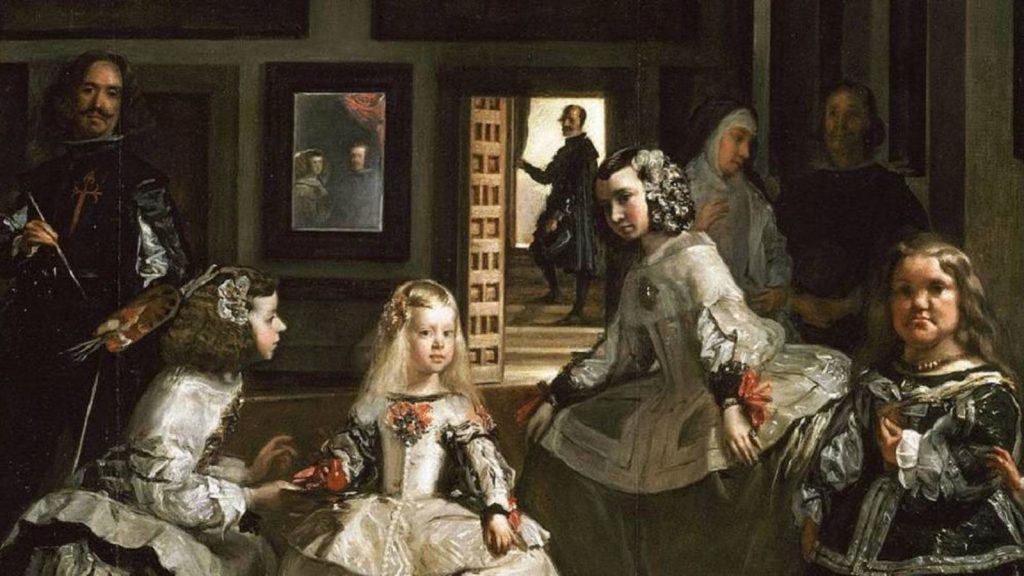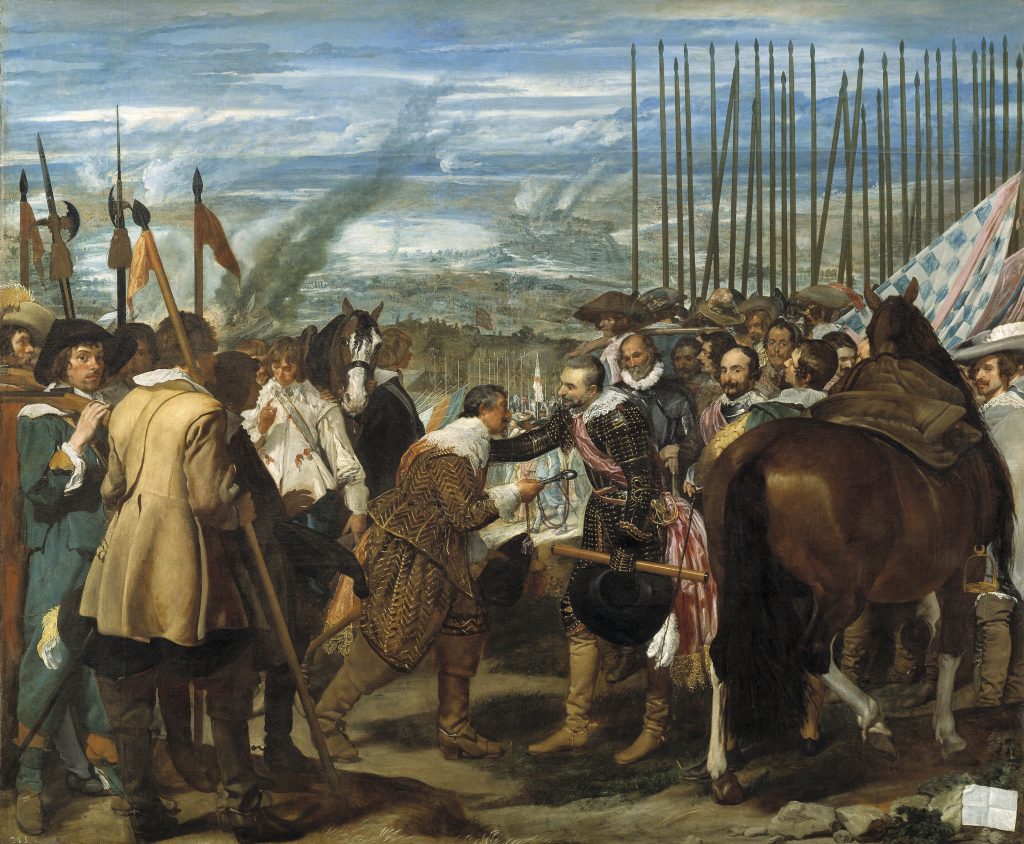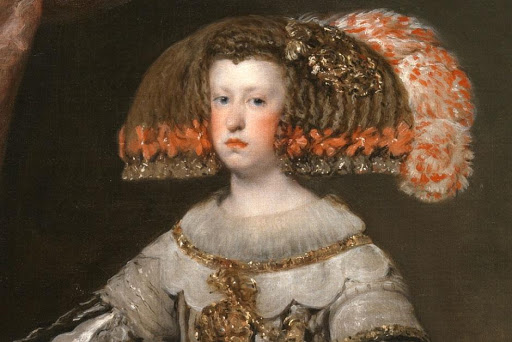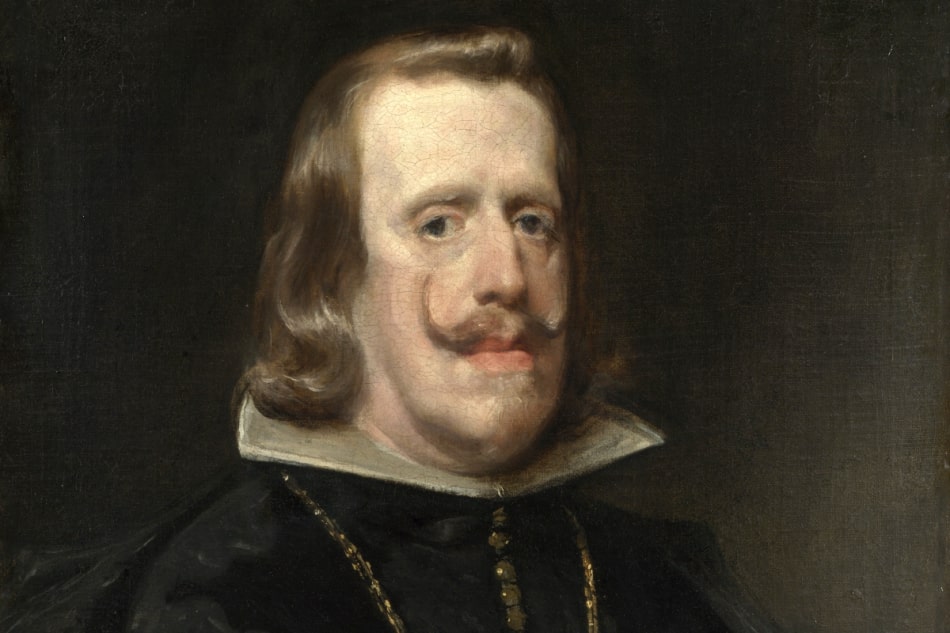2021 is the 400th anniversary of Philip IV’s ascension to the throne of Spain. Philip IV (8 April 1605 – 17 September 1665) was King of Spain from 1621 to his death and (as Philip III) King of Portugal from 1621 to 1640. He was a patron of the arts and presided over Spain during the Thirty Years’ War.
Born in Royal Palace of Valladolid, Philip was the eldest son of Philip III and his wife, Margaret of Austria. In 1615, at the age of 10, Philip married 13-year-old Elisabeth of France. They had seven children, with only one being a son, Balthasar Charles. Balthasar Charles died at the age of sixteen in 1646.
Patronage of the arts

Philip IV is remembered both for the ‘astonishing enthusiasm’ with which he collected art and for his love of theatre.
On the stage, he favoured Lope de Vega, Pedro Calderón de la Barca, and other distinguished dramatists. A number of comedies credit Philip as a contributory author. Recent scholarship suggests Philip’s financial sponsorship of playwrights, however, may have been less extensive than once thought.
From an art perspective, Philip is famous for his patronage of the court painter Diego Velázquez, who rapidly became a favourite. Philip retained Velázquez until the artist’s death in 1660. Many of his works are in the Museo del Prado in Madrid. The king and Velázquez shared common interests in horses, dogs and art, and in private they formed a relaxed relationship over the years.
Philip also supported a number of other prominent painters, including Eugenio Caxés, Vicente Carducho, Gonzales and Nardi. Philip accumulated over 4,000 pieces of art by the time of his death.
The Thirty Years’ War

The 1618 to 1648 Thirty Years’ War was fought primarily in modern Germany and Central Europe. Philip reigned over Spain for the majority of that time. Related to The Thirty Years’ War were the Eighty Years’ War, the War of the Mantuan Succession, the Franco-Spanish War, and the Portuguese Restoration War.
The 1620s were good years for Spanish foreign policy: the war with the Dutch went well, culminating in the retaking of the key city of Breda in 1624.
By the end of the decade, however, Philip’s government was faced with the question of whether to prioritise the war in Flanders or Spain’s relationship with France during the War of the Mantuan Succession (1628–1631). Philip’s advisors recommended prioritising the war in Flanders, taking action to safeguard the Spanish Road to the Netherlands. This antagonised the French King Louis XIII and proved to be a strategic disaster.
Despite fresh Spanish successes in the mid-1630s – in particular, the defeat of the Swedish-led Protestant forces at the Battle of Nördlingen in 1634 – the increased tensions with France made war between the two Catholic states increasingly inevitable.
The Spanish-French war ensued from 1635. Early Spanish successes threatened Paris, and even after the Spanish defeat at Rocroi, Spain remained a strong opponent. But from 1640 onwards, a period which saw large-scale revolts across Spanish territories in protest against the rising costs of the conflict, Spain found it difficult to sustain the war.
The Treaty of the Pyrenees in 1659, and the marriage of Philip’s daughter Maria Theresa to the young King Louis XIV finally brought the war with France to an end. The war against Portugal continued however, as Philip unsuccessfully attempted to regain control over his lost kingdom.
The personal life of Philip IV

At age of 44 in 1649, Philip remarried, following the deaths of both Elisabeth and his only legitimate heir. His second wife was 14-years-old Mariana of Austria. Mariana bore him five children, but only two survived to adulthood. They were a daughter Margarita Teresa, born in 1651, and the future Charles II of Spain in 1661.
Philip was a fine horseman, a keen hunter and a devotee of bullfighting, all key elements of royal public life during the period.
Diego Velázquez described Philip’s key weakness as ‘he mistrusts himself and defers to others too much’. He was a pious man, though that did not stop him having numerous affairs. The most famous of these affairs was with the actress María Inés Calderón (La Calderona). Philip raised their son Juan José, born in 1629, as a royal prince.
From the 1640s onwards, Philip sought the advice and counsel of a noted cloistered abbess, Sor María de Ágreda, exchanging many letters with her.
The succession
Philip IV died in 1665. He expressed the hope his surviving son, Charles II, who was only 4 years old at the time, would be more fortunate than himself. In his will, Philip left political power as regent to his wife Mariana. He advised her to heed the counsel of a small junta committee established for this purpose.
This committee excluded Juan José, Philip’s illegitimate son, resulting in a chaotic powerplay between Mariana and Juan José until his death in 1679.
Charles II, perhaps as a result of some serious inbreeding within the Hapsburg line (his parents were uncle and niece), suffered ill-health his whole life, remained without issue and died five days short of his 39th birthday.


